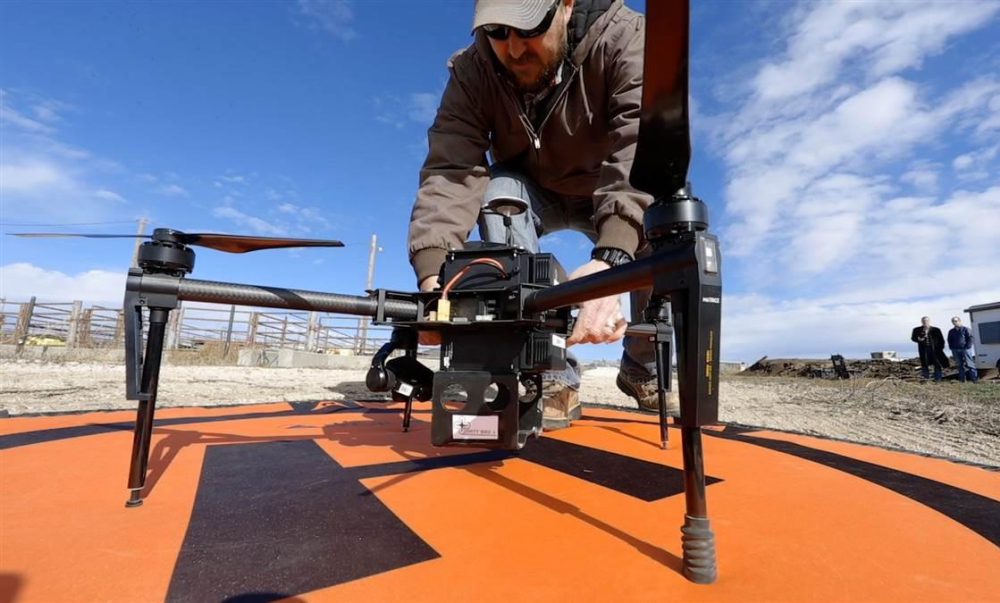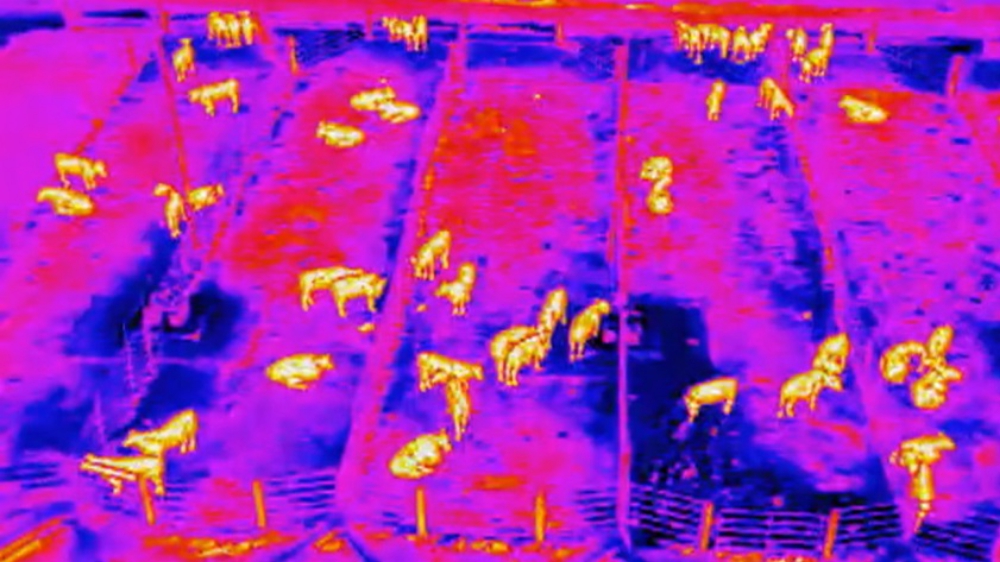At a research feedlot just west of the Texas Panhandle city of Amarillo, researchers are in the early stages of exploring how heat signatures from cattle might correlate with other data to speed detection of stress or disease. The idea stemmed from thermography used in veterinary practices diagnosing lameness in horses.
Ultimately, Texas A&M researchers hope to develop test methods to identify feverish animals before they show symptoms of illness or infect other animals. More precise targeting of antibiotics would reduce overuse of drugs, which leads to the rise of drug-resistant strains in livestock as well as humans as the microorganisms adapt.
Brent Auvermann heads the AgriLife center in Amarillo and is one of seven FAA-certificated remote pilots at the facility. Yes, seven. Auvermann takes drone research potential seriously, though as one might expect of a scientist, he knows they are but one tool to support and verify others. “Drones are not going to be the be-all and end-all of our research program, but I certainly didn’t want to leave any opportunities on the table,” he said.
Auvermann and his staff were trained by an Amarillo flight school two years ago, and recently renewed their certifications. “Now that Part 107 rules are in place, that really threw the field wide open. We didn’t have to hire specialized pilots to do it for us. We could get trained ourselves,” he said. Auvermann recently completed additional training to prepare for applying to the FAA for a daylight operations waiver. Thermal imaging can be more complicated during the day when a black, brown, or pale cow might reflect different amounts of heat. Nighttime becomes more of an equalizer.
Thermography has long been a tool of veterinary medicine, but aerial thermography is an entirely different proposition.
“It’s one thing to have a horse isolated on the ground under control, perhaps even sedated in a large animal veterinary clinic and do some very close-up thermography,” Auvermann said. “It’s another thing entirely to try to do it from the air, from a mobile platform on mobile animals, without them knowing it’s going on.”

A DJI Matrice drone equipped with a thermal imaging camera is prepped for takeoff at a research feedlot in Texas
The Amarillo location is one of 13 statewide in the Texas A&M University AgriLife fold. Drones are used at other locations, and dozens of certificated pilots are on staff. The College Station agency headquarters and the Corpus Christi center lead the way in drone use within the university system. In Corpus Christi, crops including cotton and sorghum are monitored by drones for signs of stress, including disease. The imaging from drones can help measure the size of the bolls on cotton, and through multi-angle imaging, the number of berries on a sorghum head. Drones already have a proven track record in “precision agriculture”—a term for technology-assisted farming that includes using drones to analyze soil conditions to guide irrigation and fertilizing efforts in addition to monitoring yield and stress.
Auvermann expects that drone imaging, paired with artificial intelligence and more traditional observations, will evolve quickly, given how frequently the technology has advanced. Prior to enlisting drones for animal study, Auvermann said wheat breeding has been the primary focus of the unmanned aeronautical efforts in Amarillo, capturing images to monitor how different varieties of wheat react to stress.
Photos: Texas A&M University
Source: AOPA

